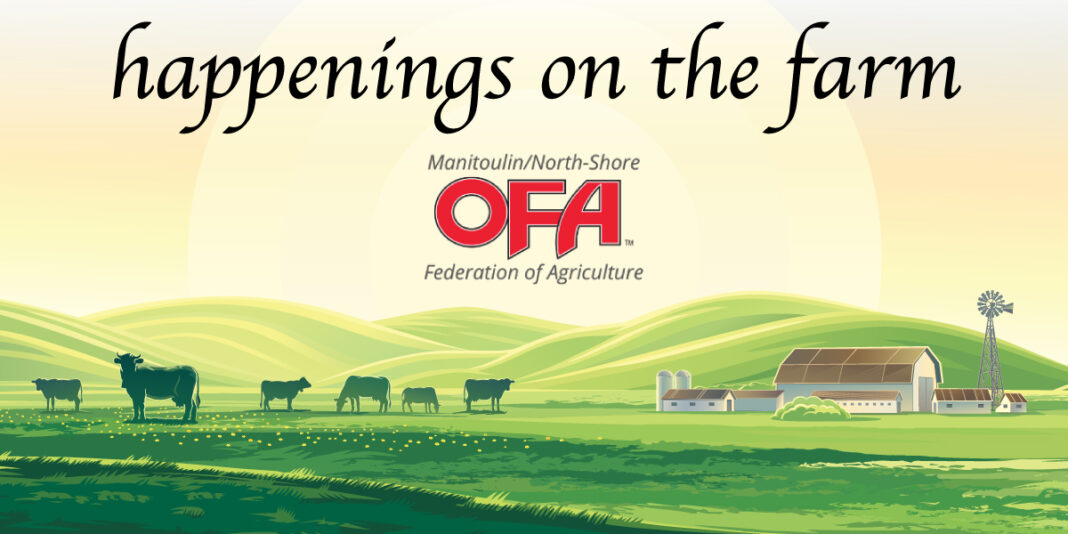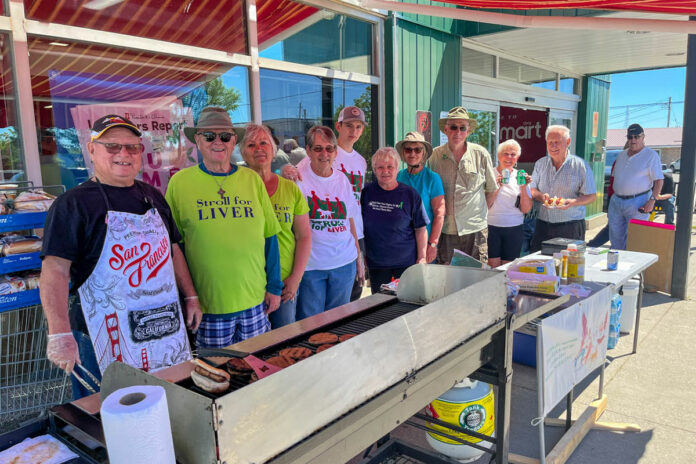Farmers on Manitoulin Island are quite busy in May and June as these months mark the beginning of the growing season. In our previous column we covered tillage and spring planting and you have likely seen lots of equipment on the road lately, getting farmers to and from the field to get those jobs done.
For farmers who grow hay, they are also busy preparing their equipment—such as mowers, tedders and balers—for their upcoming haying season. They will soon start looking at their fields to decide when to start cutting their hay, based on growth stages and weather conditions. While hay fields are an important part of crop rotation and are good for soil health, making good bales of hay is very dependent on timing and weather, which can be difficult. Some farmers wrap their hay or silage in plastic, which helps maintain feed quality while mitigating some weather-related challenges. Some farmers and organizations across Northern Ontario have been working on a pilot project to collect and recover used agricultural plastic. Farmers with grazing animals are also managing their pastures, rotating livestock to different paddocks to prevent overgrazing and allow vegetation to regrow.
Many beef farmers on the Island have also recently wrapped up their spring calving season. This can be a very busy time and the farmer needs to be attentive to their herd morning and night, watching for signs when the cows will give birth. Farmers will provide lots of nutrition for the cow and the calf, keep a close eye on both and shortly after birth, will affix a tag on the calf for ID purposes. Farmers keep detailed records of calving dates, lineage, etc. to track the performance and family line of their herd and to have on-hand when they bring their cows to a sales barn.
Most farmers across the Island have already finished their spring planting, which could include barley, oats, wheat, canola, corn and beans. Depending on soil testing and pest pressures, farmers are also applying fertilizers to provide nutrients and pesticides to protect crops from pests and diseases. Fertilizer is important to provide plants with nutrients that are not readily available in the soil, helping farmers encourage plant growth and improve yields. Farmers are encouraged to use 4R Nutrient Stewardship, which is using the right source at the right rate, right time and right place, to improve sustainability. Pesticides are classified into different categories and their application aligns with the Pesticides Act, training farmers receive during their Grower Pesticide Safety Course and Integrated Pest Management (IPM) Principles.
Agriculture on Manitoulin Island has shifted over the last few years, with more acres being used to grow crops. The relationship between bees and cropping is vital for both agricultural productivity and ecosystem health. Bees, especially honeybees and native bee species, play a crucial role in pollinating many crops, and without bees, the yields of these crops would be significantly reduced. By adopting IPM strategies, using best management practices (ie. always rinsing out equipment between applications), diversifying crops and collaborating with beekeepers, farmers across Ontario can ensure that the balance between cropping and beekeeping is advantageous for all farmers.
As always, please remember that farm equipment is using the roads and that this equipment moves quite slowly and can have large blind spots. Please be patient and careful when sharing the road. If you have any questions about farming you can check out “The Real Dirt on Farming” at realdirtonfarming.ca or send us an email at stephanie.vanthof@ofa.on.ca.





